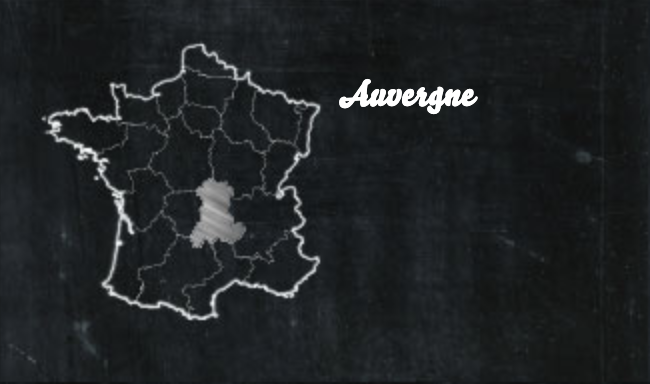Whether or not its origins actually go back more than a millennium, the legends say that the druids of Gaul blessed the herds that were heading up to graze in the summer pastures. It was in these summer pastures, called jasseries, that Fourme d’Ambert, a blue cheese that is both round and mild, was born.
Fourme d’Ambert AOC

Origin
Characteristics
– AOC since 1972.
– Blue-mould cheese.
– 50% minimum fat content.
– Cylinder 13 cm in diameter and 20-cm thick. Weight: approximately 2.2 kg.
– Dry, white, bloomy rind.
– A mild, slightly bitter taste with a flavour tending towards sweet.
– Production: 6,000 tonnes.
Gastronomie
Fourme d’Ambert marries well with wines from its region (Côtes d’Auvergne or Côtes du Forez) but goes especially well with sweet whites like Coteaux du Layon.
It is used as an ingredient in numerous dishes like pear tart with Fourme d’Ambert, duck fillet with honey and Fourme d’Ambert, and Fourme d’Ambert pie over onions and bacon.
Production
After draining naturally for 24 hours, Fourme is salted and pierced so that the cheese is aerated to allow the blue mould to develop. It is then aged in a cellar for at least 28 days. The goal of the ageing process is to promote the development of a thin, white, almost grey rind.
In the past, Fourme d’Ambert was made by farmers during the summer in their jasseries in short, thatched shelters. Fourme was primarily sold at the market in the small city of Ambert, from which it gets its name. It is important not to confuse it with Fourme de Montbrison, a blue-veined cheese with an orange rind. Every two years, the Fourmofolies festival takes place, which unites all of the inhabitants of the Ambert region around their Fourme.
The word “forme” comes from the Latin “forma”, the container used to hold the curd. There are legends that say that the Roman druids practising their religion in Pierre-sur-Haute already knew about Fourme d’Ambert. There is concrete evidence of Fourme d’Ambert production in the region from the placing of offering stones in the ninth century.
Production Area
Its region is located in the Forez mountains at the far north end of the Massif Central, where the summers are hot and the winters cold and long. Forez is a crystalline mountain that is not very fertile. The milk there is collected at an altitude between 600 and 1,000 metres, which gives the Fourme d’Ambert its unique flavour and its aroma of bellflower and heather.